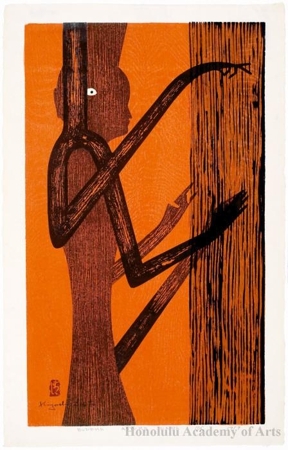朝井清による浮世絵「Buddha Asyura, Nara」
作者:朝井清
作品名:Buddha Asyura, Nara
制作年:1959
詳細:詳細情報...
情報源:ホノルル美術館
浮世絵(全 5,476 件)を表示...
説明:
Saitö’s Buddhist images are very slender, deformed and simplified, similar to the figures of Amedeo Modigliani or Alberto Giacometti. They are sometimes described as “flattened,” a quality common to traditional Japanese two-dimensional images. “Superflat” is a term created by the contemporary Japanese artist Murakami Takashi to describe the imagery of anime (Japanese animation) as rejecting the concept of depth in both pictorial and ideological terms. Visually such flatness can free viewers from the constraints of perspective. Ideologically, this flatness represents the rejection of any hierarchical ordering in contemporary culture. In the “flattened” postmodern society, the concepts of “high” or “low,” and “Japanese” or “non-Japanese,” do not exist. Thus, nothing separates coexisting international cultures. Saitö’s prints may be seen as a reflection of such visual qualities noted by Murakami.
類似の浮世絵

